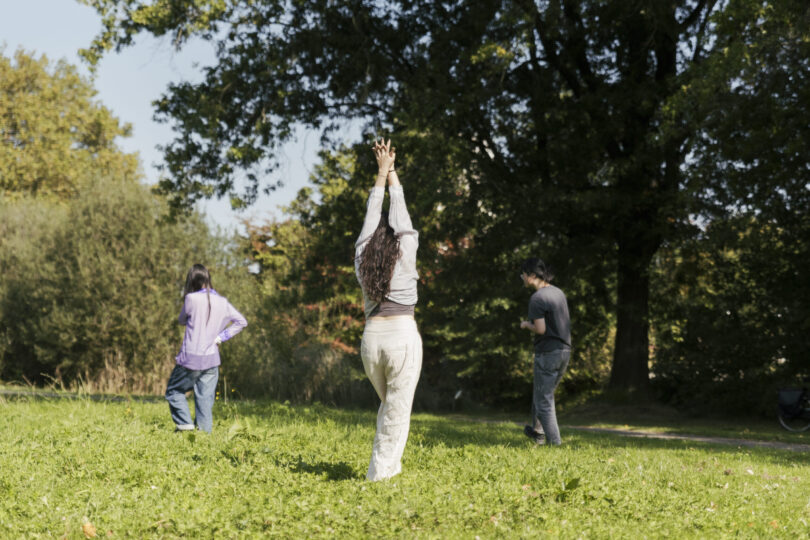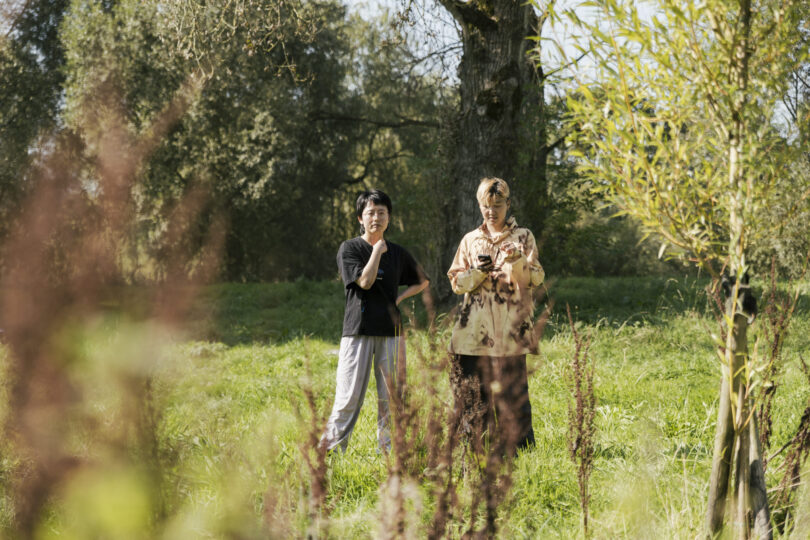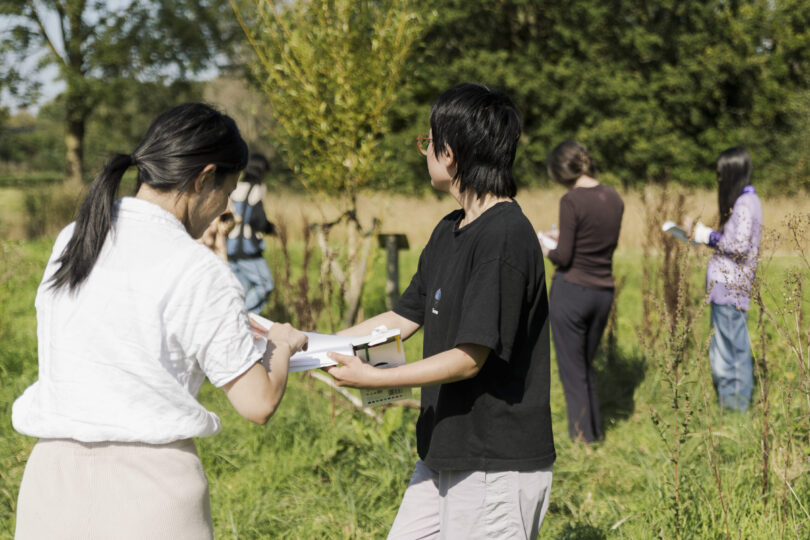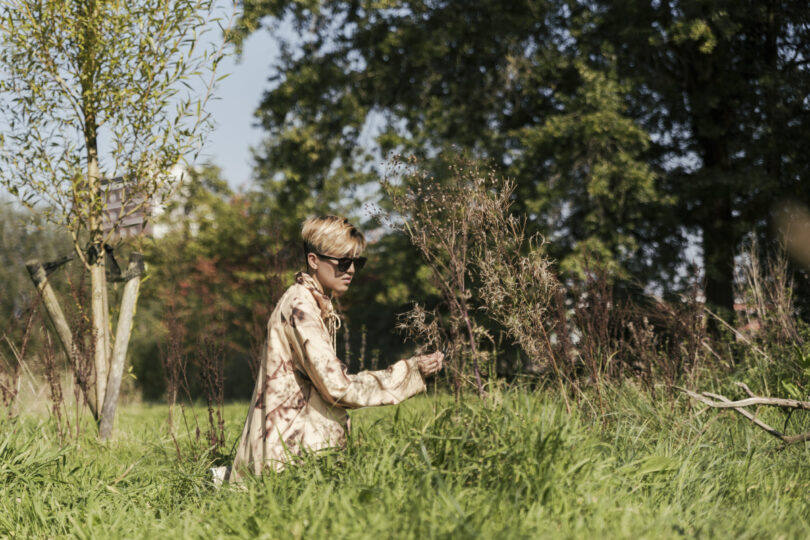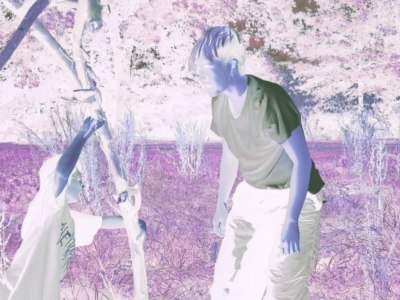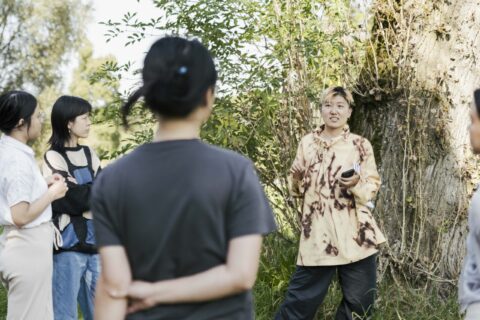
Workshop ‘As dangerous as lawn, as pebbly as grass’, by Qiaochu Guo and Raffa Li.
21-09-24, Zaartpark, Breda. Photography by Stijn Terpstra.
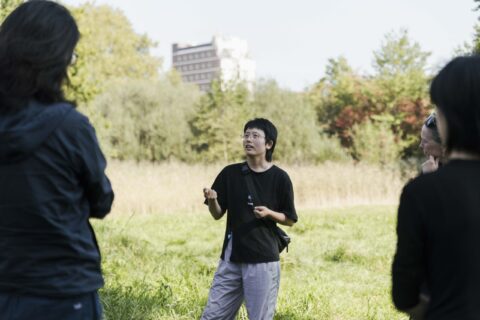
Workshop ‘As dangerous as lawn, as pebbly as grass’, by Qiaochu Guo and Raffa Li.
21-09-24, Zaartpark, Breda. Photography by Stijn Terpstra.
Q: Because of that agreement, it feels like the power dynamic is somewhat reversed. Because normally, we are not allowed to have such freedom to do something in public space, especially in the Netherlands. Actually, I conducted quite a bit of research on the Dutch landscape. All the seemingly ‘natural’ land in the Netherlands is not actually natural. Although the Dutch landscape is beautiful, it is a result of the actions of the government.
P: You said that to work on this project, it was important to you to see and feel the land first to be able to work more on your ideas. Could you tell me a bit more about those ideas that you had before you got to see the land? Do you think the final project turned out to be very different from the initial ideas you wanted to execute before seeing the land?
Q: I think the format or the shape of the project changed a lot because it is totally different then my initial thoughts. My first idea was to grow a plant called moxa, also known as mugwort. It is a specific kind of plant that we use in traditional Chinese medical treatment called moxibustion. Traditionally, people make little balls out of that plant, place them on the patient’s skin and then burn them to trigger the blood circulation. The process itself is called moxibustion and it is known to be effective in achieving body restoration. Therefore, this plant is very important in my practice, as I already worked on other projects referring to moxibustion before the 49m2 project. I was thinking of tracing back the culture and the history around moxa. My idea was to use the land given to me by Witte Rook to grow it and then harvest it with the intention to invite people and host a joint medical treatment session. However, when I finally saw the land itself, I felt that I wanted to entice a deeper connection with it.
P: Since you already mentioned your heritage, do you think your heritage as an immigrant plays a significant role in your current work?
Q: Yes. I do think it’s more about the metaphoric concept of heritage. Firstly, it is a medical treatment. It’s a Chinese medical treatment. The process itself requires people to lay down in a comfortable position, letting the body restore itself. It is quite different from the medical care here in the Netherlands. Dutch medical care is sharp, straightforward, direct, and sometimes I feel like it’s almost violent too. Chinese medical care provides emotional support from other people so it’s more of a communal activity. Not only is it meant to cure your body but you also get to learn how to do things without any rush. And I think that this approach could also allow spirits to join us in such an environment. I believe that the 49m2 project is meant to explore the tension between what I have experienced here and how it traces back to my migrant heritage.
The final workshop, conducted within the 49m2 space, ended up being a spiritual experience that involved exploring one’s senses on a deeper level while still interacting with the land and other participants. ‘As dangerous as lawn, as pebbly as grass’ both participants and hosts got to learn about their innate behaviors through breathing exercises and meaningful conversations that required close observation. Where others see a piece of uninhabited land, Qiaochu Guo noticed the potential of untouched space and how it could confront the workshop participants with their intuitive reactions to mental stimulation.
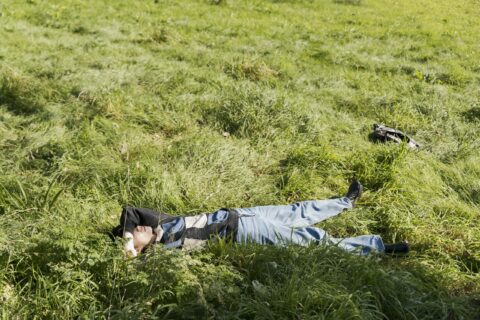
P: Looking back at your projects, it seems like collaborating with others is a significant part of your creative process. What makes you want to work with a certain person or group? Do you go by any specific criteria when you choose the people around you?
Q: That’s a good question. I’ll focus a bit more on how I conducted this project. First, I hosted an open call. With that open call I wanted to share my authority over the land with others. I believe that I should not be the only person with such access to the land for three whole months. It should be for everyone. So, my question was: what if you could do anything on this land? I asked my friends to give me some proposals of what they’d like to do with me. One of the proposals focused on digging a hole and firing ceramics inside this land. The process of firing is not easy for people who don’t have the means for it. My friend tried doing it in her backyard but she was warned by her neighbours.
P: It does seem quite tricky.
Q: We continued to brainstorm. If we wanted to fire clay, how should we do it? So first, dig a hole. Then we’d need to build a large bowl to put the clay in. After that, we’d need some branches to intensify and direct the fire more precisely. However, if it rains, it would become very wet, and the fire could go out. At that moment, we were very excited about our ideas. But then I realised we still needed to discuss it with the people from Witte Rook. We’d need someone to be at the site for the whole time in case someone passing by, decided to call the police. Then I realized it’s not really the ‘free land’ that we can access. We still need to take care of a lot of relationships that rely on it. I still want to include that idea inside the final publication, perhaps a zine.
P: What drives your creativity? Is there something that you rely on a lot or something that you get inspired by?
Q: I think I’m inspired by unusual visuals—the shape, the color, the visual elements of the objects I touch. I’ve been working around the idea of the human body for a long time now and I like to see it as a material that can react and give me feedback. So I like to collect this information from my own body. My body is not only physical but also psychological. It’s all relative so I do a lot of movement improvisation and research before I know what I want to do.
P: What do you think is the biggest lesson for you to take away from this project? Is there something that you learned about yourself or maybe other people around you that you thought was particularly important?
Q: Hmm. Actually, from the work I did myself, I didn’t learn that much. But from the workshop, I did learn something. I learned that I cannot assume the participants’ intentions or expect any certain actions from them, even though I am the host. As the host, I am setting an example or sharing something I wish to highlight, but how they respond is entirely up to them. I shouldn’t feel hurt if participants do whatever they wish to do. I find this mental balance between having full control and having no control at all very interesting.
Paula Rafalowska, September 2024

